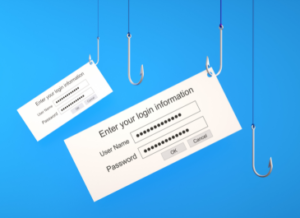What is Phishing?
Phishing is a type of social engineering attack that preys on unsuspecting victims. In its most basic form, phishing involves fraudulent communication from a seemingly trustworthy or reputable source containing a message that prompts a response or action. The scammer may trick victims into revealing sensitive information such as login credentials, granting unauthorized access to a system, or clicking on malicious links or email attachments.
Most phishing attacks are perpetrated via email, although some use social media, text messages, and phone calls. Regardless of the channel used, the phisher’s goal is to make the email seem genuine and unquestionable, which typically means taking on false but convincing personas such a fellow employee, customer, IT expert, manager, celebrity, insurer, and so on.
What are the Different Types of Phishing Scams
While the underlying premise of all phishing attacks is basically the same, the techniques employed can vary widely. Here are the various ways that phishers perpetrate their attacks:
- Email phishing: Involves mass email spraying.
- Spear phishing: Includes targeted attacks with personalized messages.
- Whaling/CEO phishing: Involves attacks on top officials and executives.
- Vishing: Entails phishing via voice calls.
- Smishing: Involves phishing via text messaging.
- Quishing: Encompasses phishing via QR code.
- Angler phishing: Occurs when the attacker masquerades as a customer service agent through cloned social media profiles or websites.
- Pharming: Occurs when the attacker corrupts a browser’s cache so that the domain name system redirects users to a malicious website.
- Clone phishing: Occurs when the attacker creates malicious copies of genuine messages.
How to Spot the Difference Between Real and Phishing Emails
To identify phishing scams, you first need to understand how social engineering works. Social attacks don’t prey on just the gullibility of their victims. They also take advantage of easy-to-provoke human emotions such as worry, greed, anxiety, joy, anger and grief. Here are the common telltale signs that give away most phishing emails:
- Unknown sender, sometimes with a vague identity
- Off-brand tone
- Inconsistencies in the sender’s branding, identity, email address, or domain names
- Unusual requests, such as downloading a file, installing a program, providing credentials, logging in through the link provided, or forwarding the email
- Generic salutations, such as “dear customer”

- A sense of intense urgency
- Shortened link leading to a suspicious login or download page
- Brief message lacking helpful or detailed information
- Poorly written text, often with grammatical and spelling errors
- Suspicious attachments (strange file types, thumbnails, and file names)
- Bonkers claims such as winning rewards and account suspensions
- Bold threats for not complying with the request
In 2023, 74% of breached involved the human element, which includes social engineering attacks, errors, or misuse.”
How to Protect Your Business Against Phishing Attacks
The most effective defense against phishing attacks is to quickly train employees to recognize and respond appropriately to phishing advances. No matter how compelling, personalized, or well-crafted a phishing email gets, it always has a tell. This tell could be the unidentifiable sender, the unusual URL, the odd request, the timing, or the message’s tone. Teach your employee to spot even the most subtle red flags and report suspicious emails. Urge all employees not to click on links or attachments from unknown senders or give in to any demands for sensitive information.
Besides comprehensive employee training, here are a few more preventative measures you can take to wade off scammers:
- Install anti-phishing tools on all endpoints to detect and block malicious sites.
- Enable spam filters on browsers and email clients that quarantine and check suspicious emails before reaching the inbox.
- Install robust anti-malware systems to stop malicious code from running.
- Use multifactor authentication (MFA) on all user accounts.
- Take a Zero Trust security approach.
- Install impenetrable firewalls all around the corporate network.
Why Work with Digicorp?
Phishing is not a threat to take lightly. Luckily, you can quickly mitigate most social engineering risks with the proper knowledge, expertise, and tools. At Digicorp, we offer multiple platforms that allow you to administer tests and training to your employees on the latest phishing and ransomware attacks, along with effective detective methods.
Managing cybersecurity can be challenging and confusing, especially when you don’t know where to start. But don’t worry — you can count on use to do all the heavy lifting on your behalf.
Get in Touch
Need support? Interested in learning more? Fill out the form below and one of our representatives will be in touch with you shortly.





